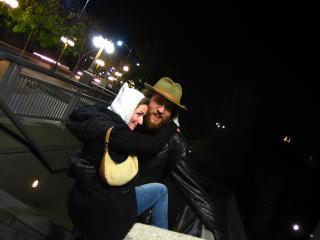
Hot Air: Meeting Canada’s Climate Change Challenge is a concise and virtually up-to-the-minute examination of Canadian climate change policy: past, present, and future. Jeffrey Simpson, Mark Jaccard, and Nic Rivers do a good job of laying out the technical and political issues involved and, while one cannot help taking issue with some aspects of their analysis, this book is definitely a good place to start, when seeking to evaluate Canada’s climate options.
Emission pathways
Hot Air presents two possible emissions pathways: an aggressive scenario that cuts Canadian emissions from 750 Mt of CO2 equivalent in 2005 to about 400 Mt in 2050, and a less aggressive scenario that cuts them to about 600 Mt. For the sake of contrast, Canada’s Kyoto commitment (about which the authors are highly critical) is to cut Canadian emissions to 6% below 1990 levels by 2012, which would mean emissions of 563 Mt five years from now. The present government has promised to cut emissions to 20% below 2006 levels by 2020 (600 Mt) and by 60 to 70% by 2050 (225 to 300 Mt). George Monbiot’s extremely ambitious plan calls for a 90% reduction in greenhouse gas emissions by 2030 (75 Mt for Canada, though he is primarily writing about Britain).
While Monbiot’s plan aims to reach stabilization by 2030, a much more conventional target date is around 2100. It is as though the book presents a five-decade plan to slow the rate at which water is leaking into the boat (greenhouse gasses accumulating in the atmosphere), but doesn’t actually specify how to plug the hole before it the boat sinks (greenhouse gas concentrations overwhelm the ability of human and natural systems to adapt). While having the hole half-plugged at a set date is a big improvement, a plan that focuses only on that phase seems to lack an ultimate purpose. While Hot Air does not continue its projections that far into the future, it is plausible that the extension of the policies therein for a further 50 years would achieve that outcome, though at an unknown stabilization concentration. (See this prior discussion)
Policy prescriptions
Simpson, Jaccard, and Rivers envision the largest reductions being achieved through fuel switching (for instance, from coal to natural gas) and carbon capture and storage. Together, these account for well over 80% of the anticipated reductions in both scenarios, with energy efficiency improvements, agricultural changes, waste treatment changes, and other efforts making up the difference. As policy mechanisms, the authors support carbon pricing (through either a cap-and-trade scheme or the establishment of a carbon tax) as well as command-and-control measures including tightened mandatory efficiency standards for vehicles, renewable portfolio standards (requiring a larger proportion of energy to be renewable), carbon management standards (requiring a larger proportion of CO2 to be sequestered), and tougher building standards. They stress that information and subsidy programs are inadequate to create significant reductions in emissions. Instead, they explain that an eventual carbon price of $100 to $150 a tonne will make “zero-emissions technologies… frequently the most economic option for business and consumers.” This price would be reached by means of a gradual rise ($20 in 2015 and $60 in 2020), encouraging medium and long-term investment in low carbon technologies and capital.
Just 250 pages long, with very few references, Hot Air takes a decidedly journalistic approach. It is very optimistic about the viability and affordability of carbon capture and storage, as well as about the transition to zero emission automobiles. Air travel is completely ignored, while the potential of improved urban planning and public transportation is rather harshly derided. The plan described doesn’t extend beyond 2050 and doesn’t reach a level of Canadian emissions consistent with global stabilization of greenhouse gas concentrations (though it would put Canada on a good footing to achieve that by 2100). While the book’s overall level of detail may not satisfy the requirements of those who want extensive technical and scientific analysis, it is likely to serve admirably as an introduction for those bewildered by the whole ecosystem of past and present plans and concerned with understanding the future course of policy.







